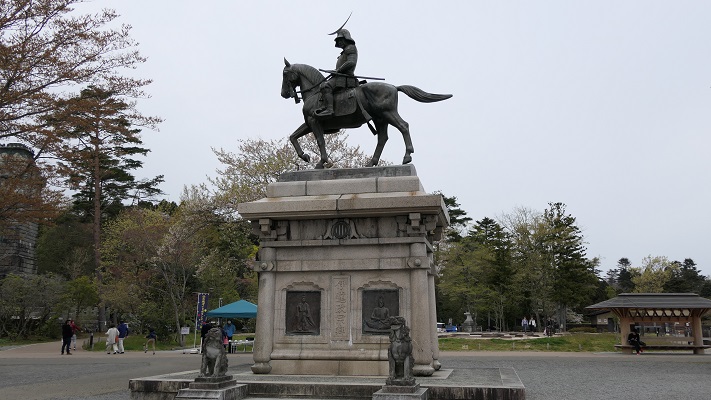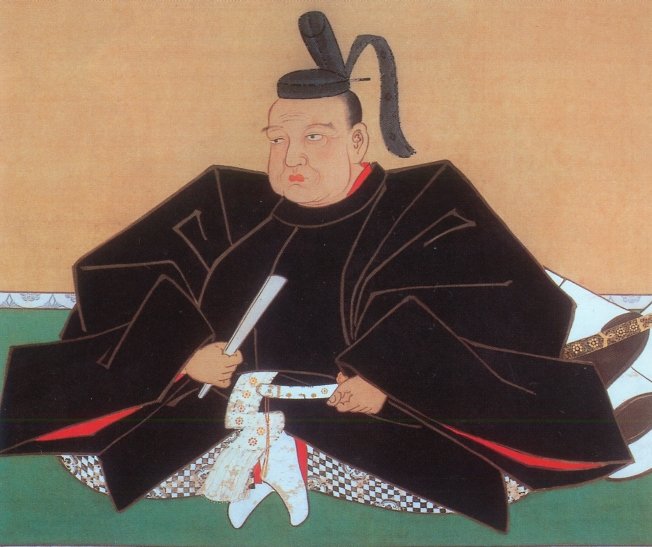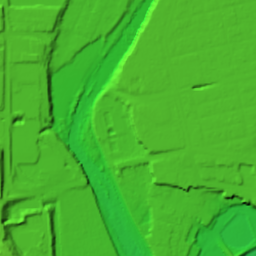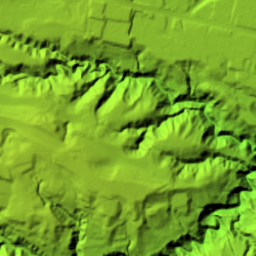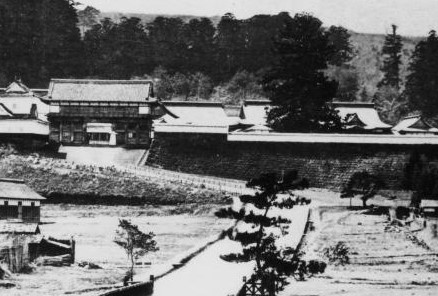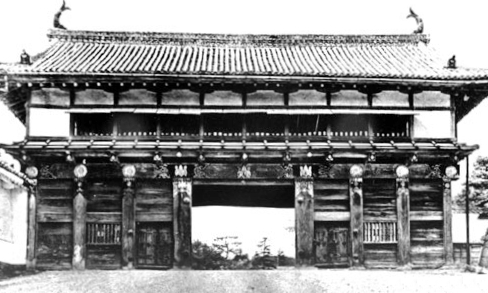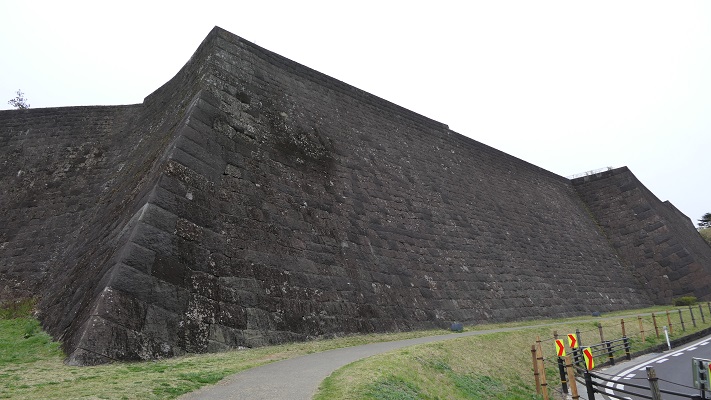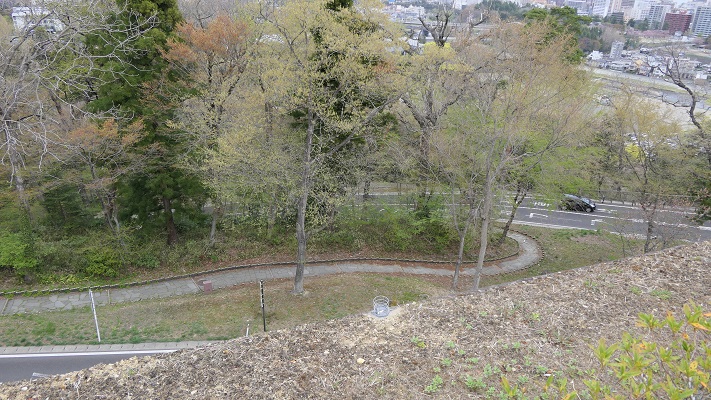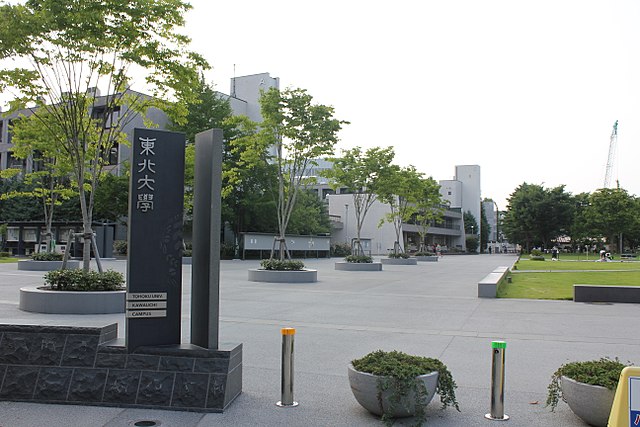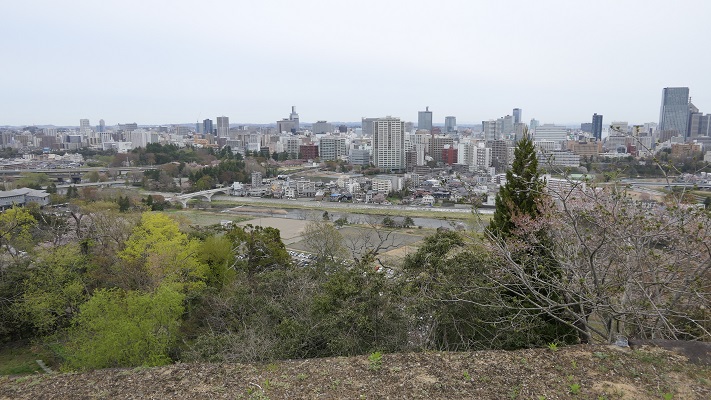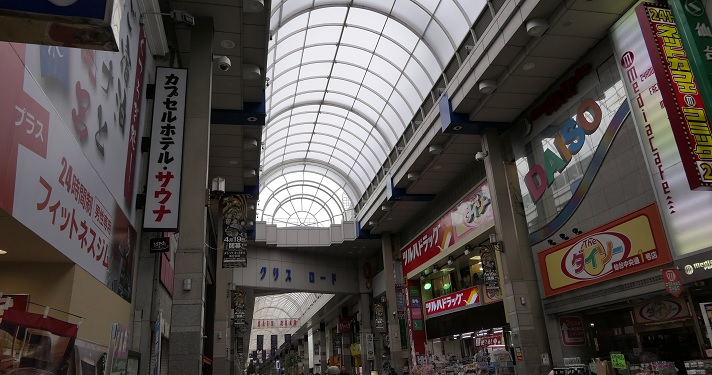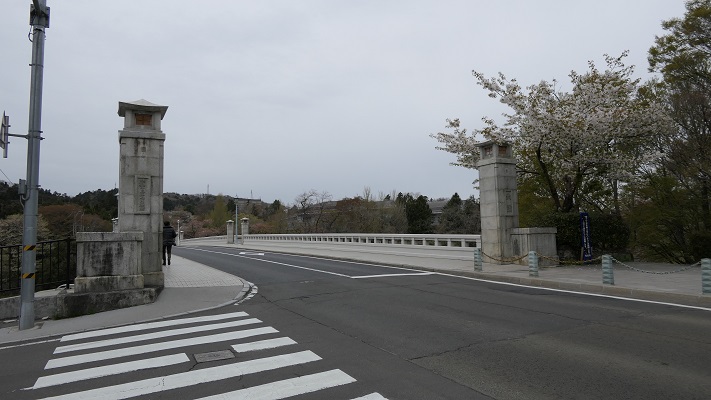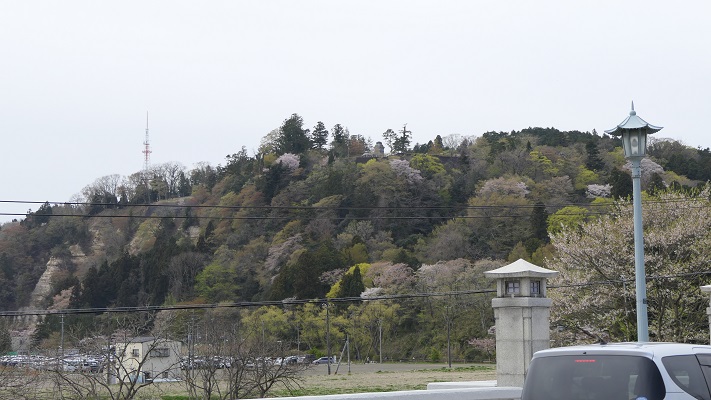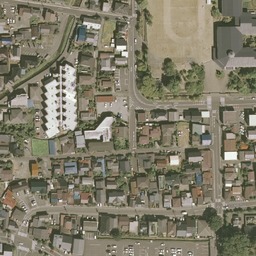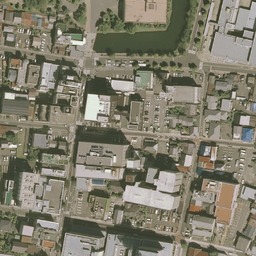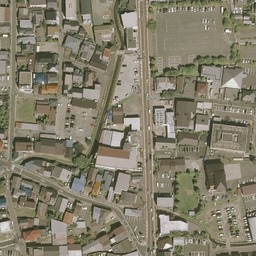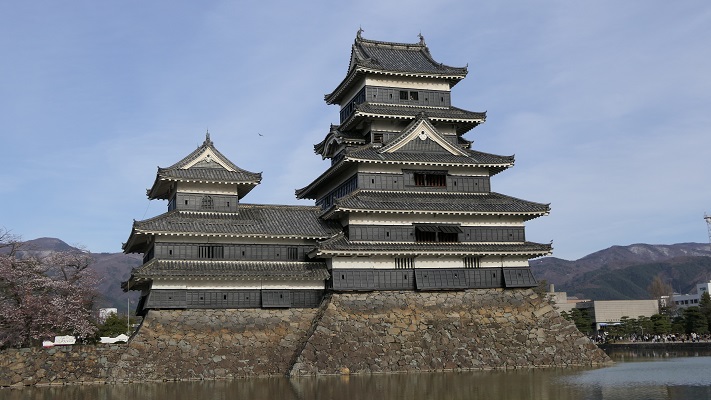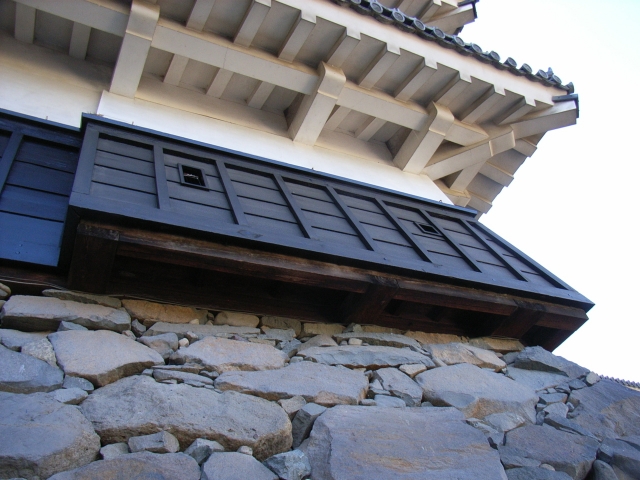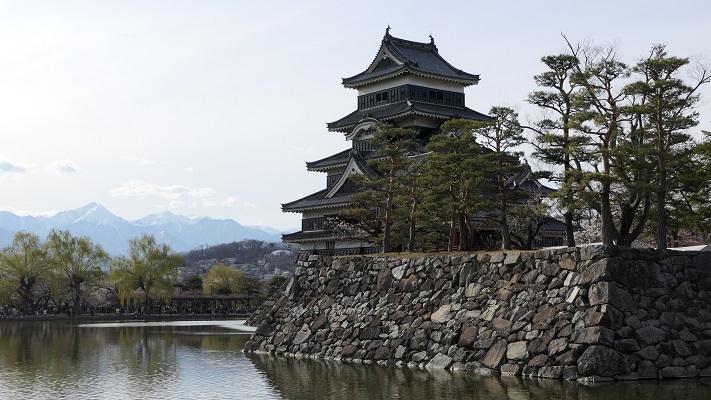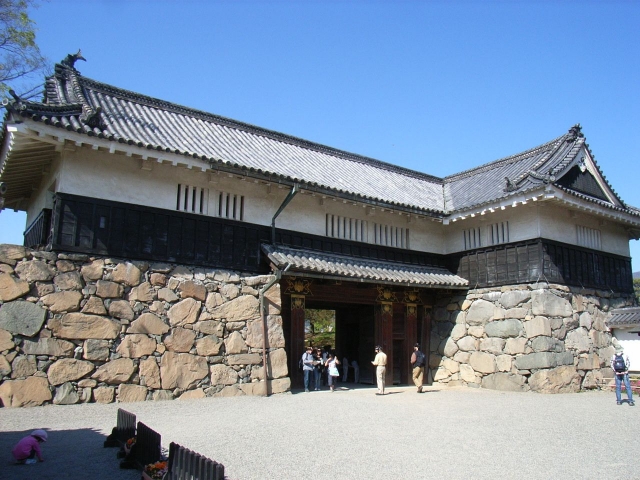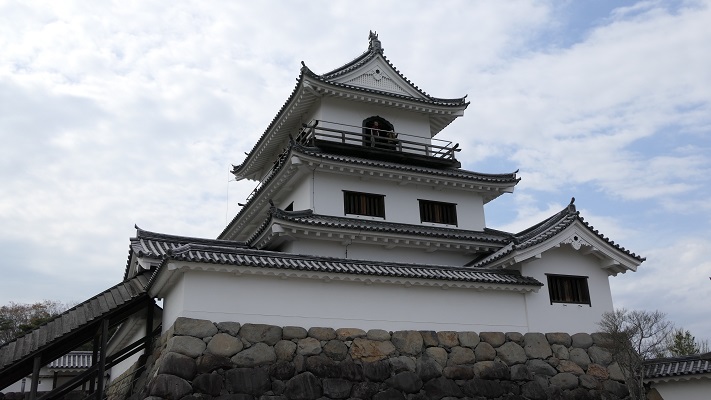
Location and History
白石城は、宮城県南端の白石市にあります。この地域は、江戸時代にはまた仙台藩の南端にもあたりました。この城は、中世初期には築かれたと言われています。それ以来、この城の城主は何度も入れ替わりました。その位、この地域は重要な所だったのです。戦国時代の終わりには、ついには伊達氏がこの城を手に入れました。伊達氏は、重臣の片倉氏をこの城に据えました。この城の天守を含む構成は、この時期に整備されました。
The Shiroishi castle is located in Shiroishi city, in the southern tip of Miyagi prefecture. The area was also in the southern tip of the feudal domain of Sendai in the Edo period. It is said that the castle was built in the early Middle Ages. Since then, the lords of the castle were changed several times because of the importance of the area. Finally, the castle belonged to the Date clan at the end of the Civil War period. They placed their senior vassals, the Katakuka clan, as the lord of the castle. The structures of the castle, including the keep tower “Tenshu” were developed then.

仙台藩は宮城県より大きな領地でした。(Sendai Domain had a larger territory than Miyagi pref.)
しかし、徳川幕府が確立されると、幕府は各藩主に本拠地の城以外は一切認めないとの命令を下しました(一国一城令)。この命令によれば、白石城は撤去されるべき存在でした。ところが、この城は例外として生き残ることができたのです。それは恐らく伊達氏の強い影響力によるものだったのでしょう。片倉氏は、江戸時代を通じてこの城と周りの地域を支配しました。二番目の城としての立場が考慮されてか、天守は「天守」とは呼ばれず、「大櫓」と呼ばれました。何度か災害や火災には遭ったのですが、城は再建と修理により維持されました。しかしついには明治維新後に、城は石垣をも含めて解体され売却されてしましました。
But, after the Tokugawa Shogunate was established, it ordered all of the domain lords to restrict all castles to no more than the one in their home ground (The law of one castle per province). According to this order, the Shiroishi castle was to be demolished. However, the castle remained as an exemption probably because of Date’s strong influence. Katakuka governed the castle and the surrounding area all through the Edo period. Considering the spot of the second castle, the keep tower was not called “Tenshu” but “Oyagura” which means large turret. Despite several disasters and fires, the castle was kept through reconstruction and maintenance. After the Meiji restoration, the castle was demolished and sold, including its stone walls, in the end.
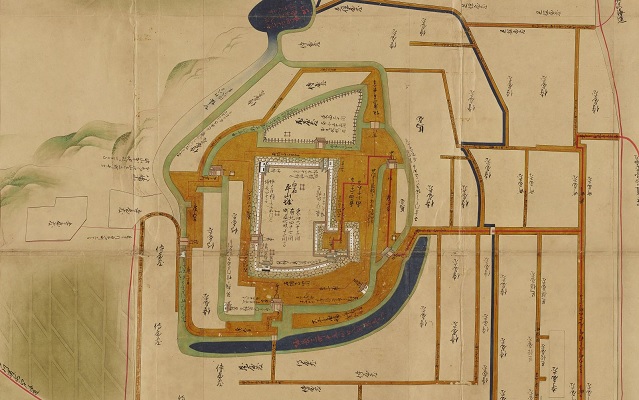
Features
白石城には今、木造復元された天守と大手門があります。この復元は、発掘の成果や古絵図から考証されました。
Shiroishi castle now has a restored wooden Tenshu and main gate “Otemon”. The restoration was planned from excavation, old paintings and drawings.

特に天守の場合には、石垣までもが復元されました。「野面積み」という自然石を積み上げる、築城時と同じ方法により作られたのです。
Especially in the case of Tenshu, even its stone walls were restored. They are made in the original way from piled-up field stones called “Nodurazumi”.
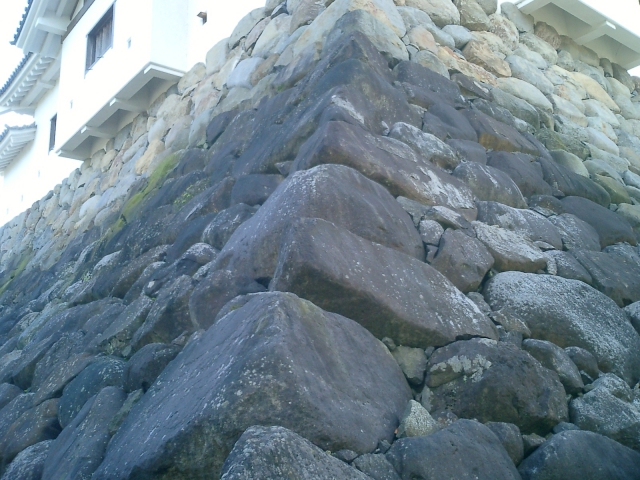
実は、日本の建築基準法はこの天守のような新築の巨大な木造建築を認めていません。しかし今回のケースは例外として認められたのです。ビジターは天守の中にも入ることができます。
Actually, Japan’s Building Standard Act prohibits the building of such a new large wooden building like the Tenshu, but the act allowed it to be built as exemption at this time. Visitors can enter the inside of Tenshu.

この建物は明らかに伝統的な木造建築であるのですが、最近の建物の中にいるようなくつろいだ雰囲気を感じます。これは多分、部屋の中が明るく、階段も広く急でない作りになっているなどの理由によるのでしょう。設計者や大工の人たちが、細かいところで快適さが増すよう配慮しているように思います。
Though it is certainly a traditional wooden style building, you may feel relaxed like in a modern style building. This is probably because the inside is bright, the stairs are wide and not steep and so on. It seems like designers and carpenters made details more comfortable.

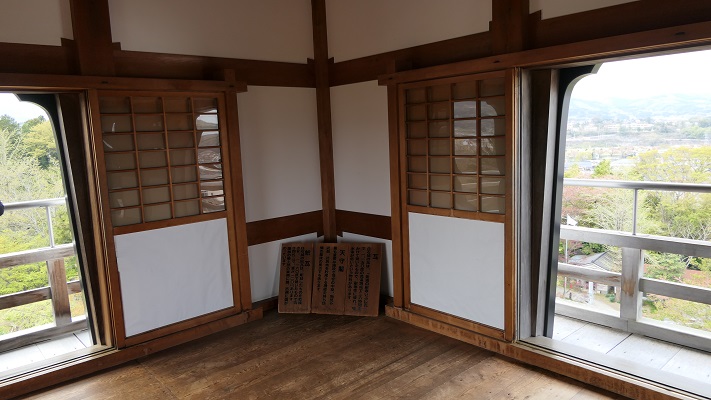
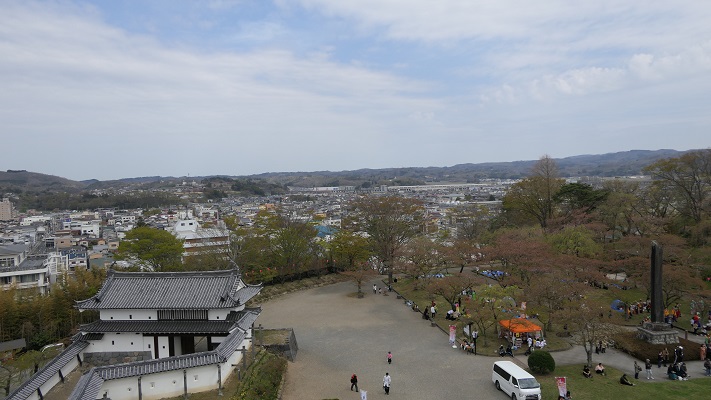
Later Life
空になった城跡は公園となり、いつしか桜の名所として知られるようになりました。しかし白石市の人々は長い間、城を再建するよう行政側に強く求めてきました。予算や細部をどう作り込むかなどいくつか問題はありましたが、市の市長は1988年に再建することを決断しました。
The vacant castle ruins were turned into a park which has became famous for cherry blossoms for some time, but the people in Shiroishi city had urged officials to rebuild the castle for a long time. Though there would be problems like the budget ,the way of making details and so on, the mayor of the city decided to do that in 1988.
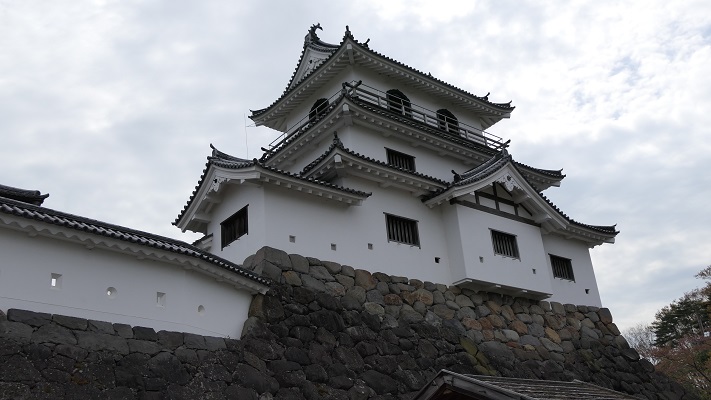
この再建においてもっと重要なトピックの一つは、城が伝統的な木造による工法で復元されたことでした。この出来事は、日本における城を維持する方法に新しい流れを導いたと言われています。城の復元は1997年に完成しました。
One of the most important topics about the rebuild was that the castle would be restored by the traditional wooden construction. It is said that the event led to the flowing of new methods for castles’ maintenance in Japan. The restoration was completed in 1997.
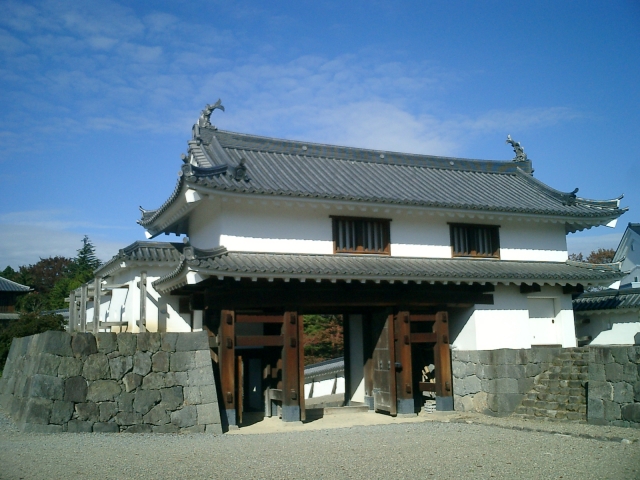
My Impression
新しくも伝統的で大型の木造城郭建築を見ることは、とてもよい経験になると思います。白石市から130kmほど離れた白河市の白河小峰城には、もう一つこのような建築物があります。距離はありますが、新幹線を使って両方回ってみるというのもよいかもしれません。
It is a very good experience for visitors to see new traditional large wooden castle buildings. There is another such building in the Shirakawa-Komine castle in Shirakawa city about 130km away from Shiroishi city. But it may be a good idea to plan a tour of both castles by using Shinkansen.
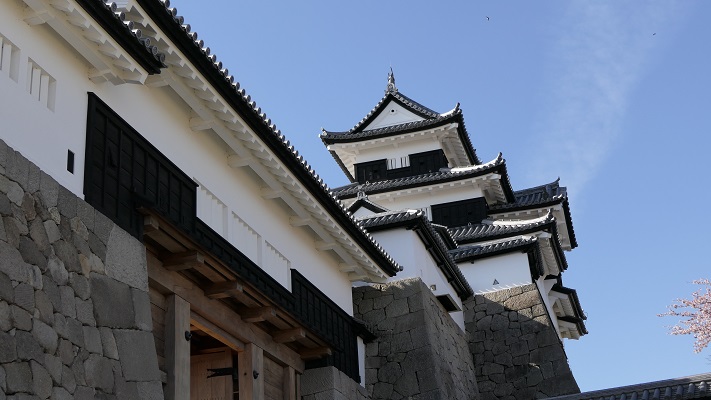
How to get There
JR白石駅から歩いて10分か、または新幹線の白石蔵王駅から車で5分です。
東京から白石駅まで:東北新幹線で福島駅まで行き、東北本線の普通列車に乗り換え
東京から白石蔵王駅まで:東北新幹線で直通です。
10 minutes walk from the JR Shiroishi train station or 5 minutes drive from the Shiroishi-Zao shinkansen station.
From Tokyo to Shiroishi st.: Take the Tohoku Shinkansen super express to the Fukushima station and transfer to the Tohoku local line.
From Tokyo to Shiroishi-Zao st.: Take the Tohoku Shinkansen super express direct to the station.















